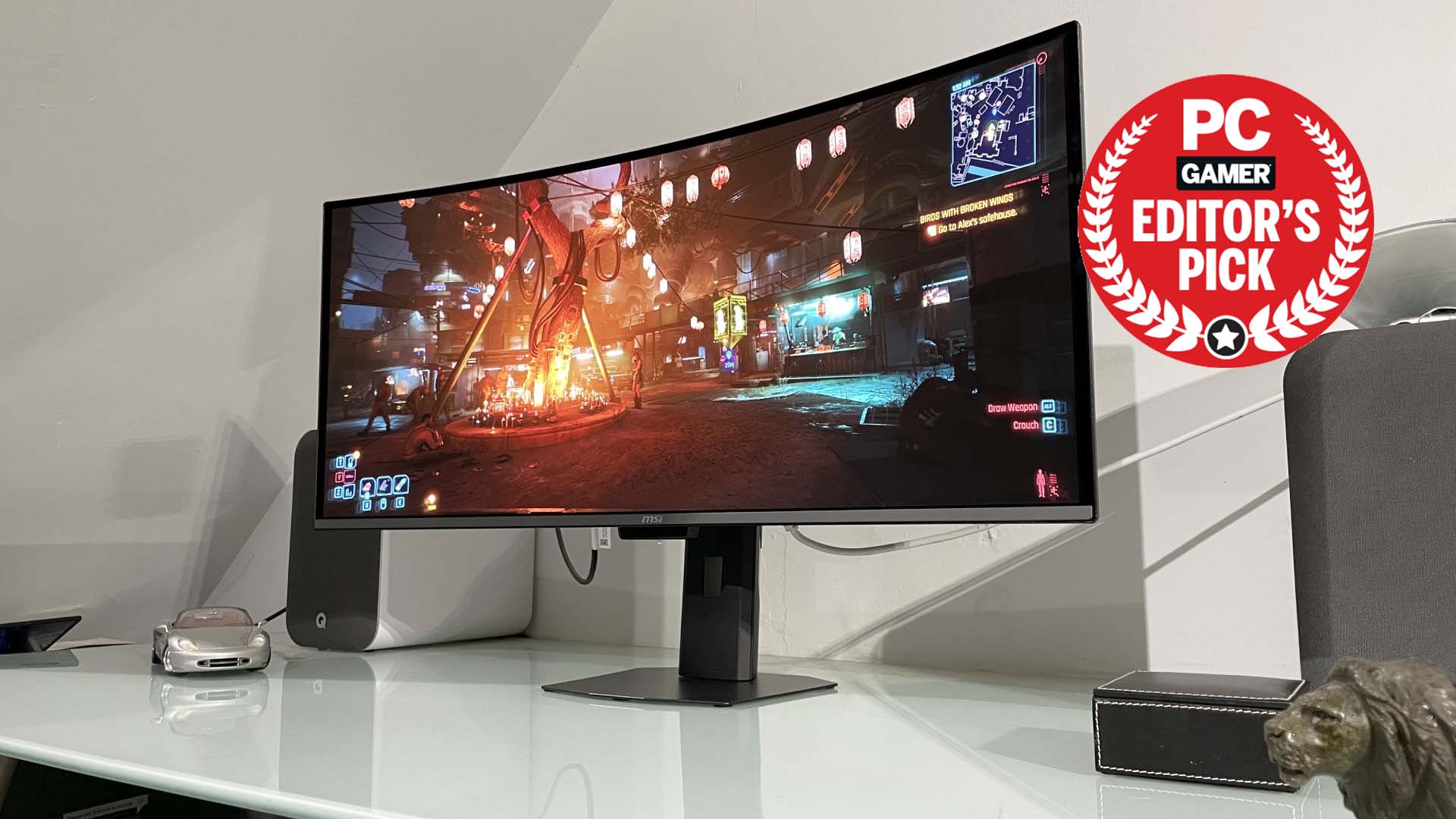From Voodoo to GeForce: The Awesome History of 3D Graphics
| digg_url = 'http://www.maximumpc.com/article/features/graphics_extravaganza_ultimate_gpu_retrospective'; |
Try to imagine where 3D gaming would be today if not for the graphics processing unit, or GPU. Without it, you wouldn't be tredging through the jungles of Crysis in all its visual splendor, nor would you be fending off endless hordes of fast-moving zombies at high resolutions. For that to happen, it takes a highly specialized chip designed for parallel processing to pull off the kinds of games you see today, the same ones that wouldn't be possible on a CPU alone. Going forward, GPU makers will try to extend the reliance on videocards to also include physics processing, video encoding/decoding, and other tasks that where once handled by the CPU.
It's pretty amazing when you think about how far graphics technology has come. To help you do that, we're going to take a look back at every major GPU release since the infancy of 3D graphics. Join us as we travel back in time and relive releases like 3dfx's Voodoo3 and S3's ViRGE lineup. This is one nostalgiac ride you don't want to miss!
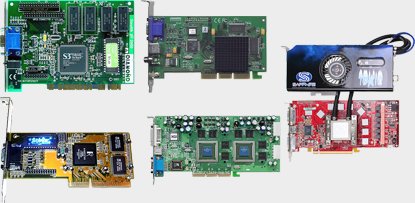
S3 ViRGE
A virgin in the 3D graphics arena, S3 in 1995 thrust itself into this new territory with its ViRGE graphics series. Playing on the hype surrounding virtual reality a decade and a half ago, ViRGE stood for Virtual Reality Graphics Engine and was one of the first 3D GPUs to take aim at the mainstream consumer. While nothing compared to today’s offerings, early 64-bit ViRGE cards came with up to 4MB of onboard memory, and core and memory clockspeeds of up to 66MHz. It also supported such features as Bilinear and Trilinear texture filtering, MIP mapping, alpha blending, video texturing mapping, Z-buffering, and other 3D texture mapping goodies.
Ironically, those same ‘cutting edge’ features took a toll on the ViRGE silicon resulting in underwhelming 3D performance. In some cases, performance was so bad that users could obtain better results with the CPU, causing the ViRGE to be unaffectionate dubbed the first 3D decelerator. Ouch.
Fun Fact: Just how far has graphic cards come in the past 15 years? Enough so that we've seen the S3 ViRGE selling for as little as $0.45 in the second-hand market.
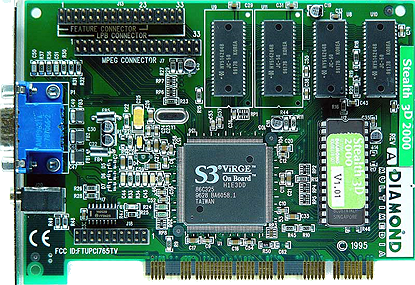
(Image Credit: Palcalova Sbirka)
Model: ViRGE
Date Released: 1995
Interface: PCI
Shader Model: N/A
DirectX: 6
Manufacturing Process: 0.35 micron
Core Clockspeed: 66MHz
Memory Bus: 64-bit
Keep up to date with the most important stories and the best deals, as picked by the PC Gamer team.
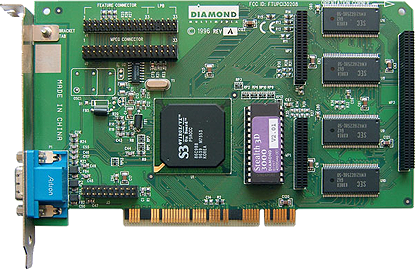
(Image Credit: pctuning.tyden.cz)
Model: ViRGE VX
Date Released: 1995
Interface: PCI
Shader Model: N/A
DirectX: 6
Manufacturing Process: 0.5 micron
Core Clockspeed: 50MHz
Memory Bus: 64-bit
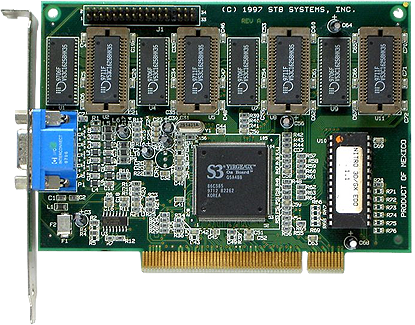
(Image Credit: Wikipedia Commons)
Model: ViRGE GX
Date Released: 1997
Interface: PCI
Shader Model: N/A
DirectX: 6
Manufacturing Process: 0.35 micron
Core Clockspeed: 66MHz
Memory Bus: 64-bit
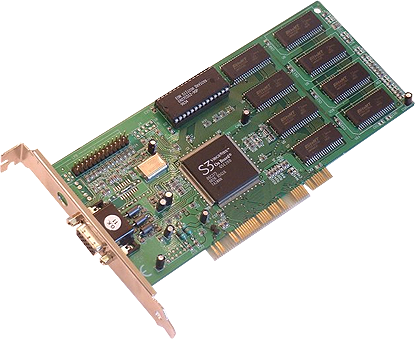
(Image Credit: promptweb.co.uk)
Model: ViRGE DX
Date Released: 1997
Interface: PCI
Shader Model: N/A
DirectX: 6
Manufacturing Process: 0.35 micron
Core Clockspeed: 66MHz
Memory Bus: 64-bit
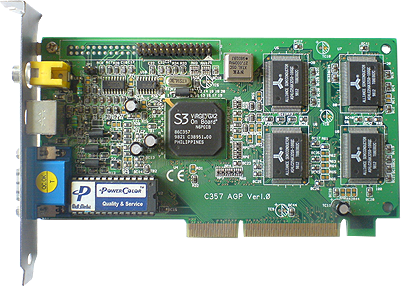
(Image Credit: freewebs.com)
Model: ViRGE GX2
Date Released: 1998
Interface: PCI
Shader Model: N/A
DirectX: 6
Manufacturing Process: 0.35 micron
Core Clockspeed: 66MHz
Memory Bus: 64-bit
ATI Rage 3D and Rage II
Well before Radeon ever became synonymous with ATI, the Canadian-based graphics chip maker was best known for its 3D Rage line. Released in 1995, the original Rage 3D didn't have a whole going for it, such as slow EDO RAM, a 32-bit memory bus, and a max memory of just 2MB.
A year later ATI released the Rage II, and while the upgrades seem minor on paper, performance was significantly improved. The new chipset traded in 2MB of EDO memory for up to 8MB of SDRAM and widened the bus to 64-bit, while also increasing the core clockspeed from 40MHz to 60MHz. Support for DVD playback was also added.
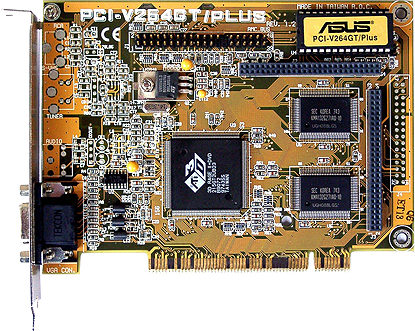
(Image Credit: ixbt.com)
Rendition Verite 1000
Headquartered in Mountain View, CA, Rendition emerged in the mid 1990s as a fabless semiconductor manufacturer whose goal was to compete in the high-end videocard market. Throughout the company's tenure, Rendition managed to get a leg up on the competition by working with John Carmack to develop the first 3D-accelerated version of Quake (VQuake, or Verite-accelerated Quake).
VQuake was designed to take advantage of the Verite 1000 chipset, which was launched in 1996. A year prior, Carmack stated "Verite will be the premier platform for Quake." The card came capable of bilinear filtering, perspective correcting, and a basic pipeline configuration of 1/1/1 (textures/pixels/Z).
Poor 2D performance proved problematic for the board, as did programming for the Verite. It was the latter which Carmack would later say led to iD's decision to move away from proprietary APIs to OpenGL.
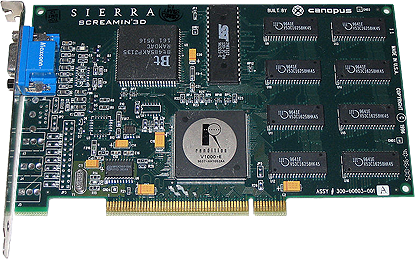
(Image Credit: Wikipedia)
Model: Verite 2100
Date Released: 1996
Interface: PCI
Shader Model: N/A
DirectX: 2
Manufacturing Process: 0.5 micron
Core Clockspeed: 25MHz
Memory Bus: 64-bit
3dfx Voodoo1
Like a modern day Greek Tragedy, the rapid rise and untimely demise of 3dfx can best be described as a wild roller-coaster ride that most enthusiasts wish would have never ended. And in a way, it didn't, as 3dfx had a tremendous hand in shaping the 3D market as we know it today. But every good story needs a beginning, and this one starts with the original Voodoo card, or otherwise known as the Voodoo1, released in 1996.
The Voodoo1 launched 3D gaming into the limelight, even if the add-in card's implementation was less than graceful. While other videocards fused both 2D and 3D functionality onto a single board, the Voodoo1 concentrated solely on 3D and lacked any 2D capabilities. This meant consumers still needed a 2D graphics card for day to day computing, which would be connected to the Voodoo1 via a VGA pass-through cable. Only when a compatible 3D videogame was detected would the Voodoo1 then wake out of its slumber and flex its gaming muscle.
It's hard to imagine such a design being successful today, but consumers were willing to cope with the costly inconvenience at the time because the Voodoo1 put every other available 3D card in a headlock and gave them a noogie.
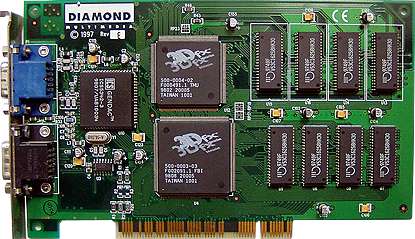
Voodoo1: No Shader Model, DX3 support, 0.5 micron, PCI, 50MHz core, 64-bit
Model: Voodoo1
Date Released: 1996
Interface: PCI
Shader Model: N/A
DirectX: 3
Manufacturing Process: 0.5 micron
Core Clockspeed: 50MHz
Memory Clockspeed: 50MHz
Memory Bus: 64-bit
Transistors: 1 million
Next up, Nvidia makes it debut.
Paul has been playing PC games and raking his knuckles on computer hardware since the Commodore 64. He does not have any tattoos, but thinks it would be cool to get one that reads LOAD"*",8,1. In his off time, he rides motorcycles and wrestles alligators (only one of those is true).


